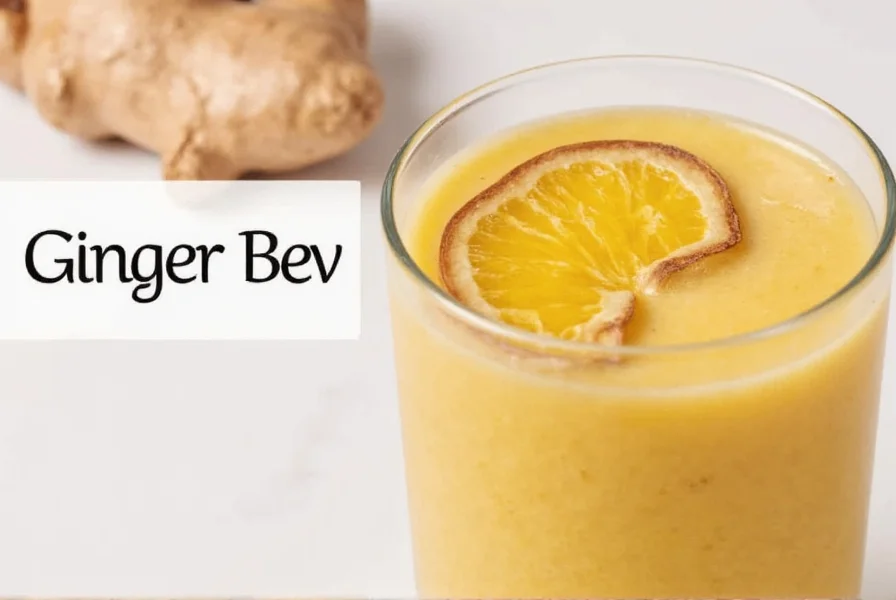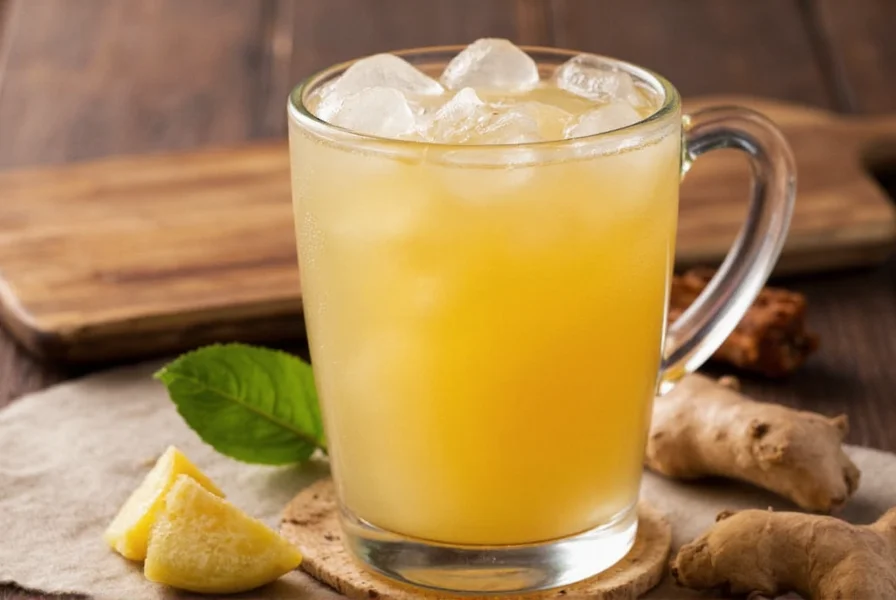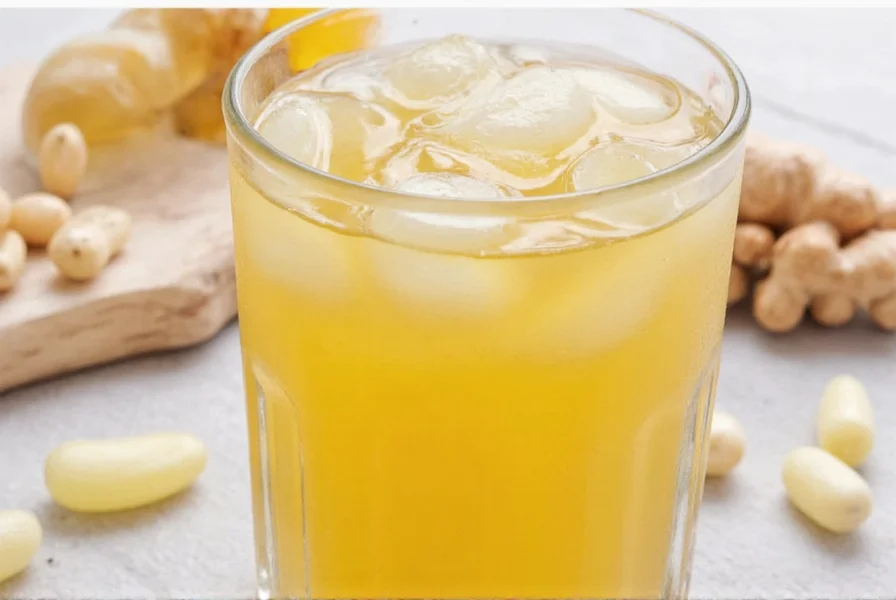Ginger beverages have been valued across cultures for centuries, evolving from traditional medicinal preparations to mainstream wellness drinks. Understanding what qualifies as a true ginger beverage—and how to maximize its health benefits—requires examining preparation methods, ingredient quality, and scientific evidence behind its effects.
What Defines a True Ginger Beverage
Not all drinks labeled as ginger beverages contain meaningful ginger content. Commercial products often use minimal ginger extract alongside significant sugar content, diminishing potential health benefits. Authentic ginger beverages feature:
- Real ginger root as primary ingredient
- Minimal processing to preserve active compounds
- No artificial flavors masking ginger's natural pungency
- Preparation methods that optimize gingerol extraction
The difference between ginger ale and ginger beer illustrates this distinction clearly. Traditional ginger beer contains higher ginger concentration and natural fermentation, while most commercial ginger ales use ginger flavoring rather than actual ginger root.
| Beverage Type | Ginger Content | Preparation Method | Health Benefit Potential |
|---|---|---|---|
| Fresh ginger tea | High (fresh root) | Steeping grated ginger | ★★★★★ |
| Traditional ginger beer | High (fermented) | Natural fermentation | ★★★★☆ |
| Commercial ginger ale | Low (flavoring) | Carbonated with additives | ★☆☆☆☆ |
| Ginger shots | Very high (concentrated) | Raw juice extraction | ★★★★★ |
Science-Backed Health Benefits of Ginger Beverages
Research supports several health benefits associated with regular consumption of authentic ginger beverages. The active compound gingerol demonstrates potent anti-inflammatory and antioxidant properties. Studies published in the Journal of Medicinal Food confirm ginger's effectiveness for:
- Nausea relief, particularly for morning sickness and motion sickness
- Reducing muscle pain and soreness after exercise
- Lowering blood sugar levels in type 2 diabetes management
- Improving digestion and reducing bloating
For maximum benefit when making ginger tea at home, experts recommend simmering fresh ginger for 10-15 minutes rather than simply steeping. This extended cooking time increases the extraction of beneficial compounds while mellowing ginger's sharp bite.

Traditional Ginger Beverages Across Cultures
Ginger's journey as a beverage ingredient spans continents and centuries. Each culture developed unique preparation methods that optimized local growing conditions and addressed specific health concerns:
- Asia: Fresh ginger tea with honey remains a staple remedy for colds and digestive issues
- Caribbean: Traditional ginger beer evolved as a fermented probiotic beverage
- West Africa: Zobo drink combines ginger with hibiscus for a refreshing, healthful beverage
- Europe: Historical ginger wine preparations provided preservation and medicinal benefits
Understanding these traditional ginger drinks around the world reveals how preparation methods affect both flavor profiles and therapeutic properties. Many traditional recipes use the whole ginger root including skin, which contains additional beneficial compounds often discarded in modern preparations.
Optimizing Your Ginger Beverage Experience
To maximize both flavor and health benefits when consuming ginger beverages, consider these evidence-based recommendations:
- Timing matters: Consuming ginger shots 30 minutes before meals optimizes digestive benefits
- Temperature effects: Hot ginger tea extracts more gingerol, while cold preparations preserve different compounds
- Pairing wisely: Adding lemon increases antioxidant absorption, while honey soothes throat irritation
- Freshness factor: Homemade preparations lose potency after 24 hours; consume immediately for maximum benefit
Those seeking natural remedies using ginger drinks should note that effectiveness varies by preparation method. A study in the Journal of Ethnopharmacology found that freshly prepared ginger beverages showed significantly higher bioactive compound levels compared to commercial products.

Considerations and Contraindications
While ginger beverages offer numerous benefits, certain individuals should exercise caution. People taking blood thinners should consult their physician before consuming large amounts of ginger, as it may increase bleeding risk. Those with gallstones should also moderate intake, as ginger stimulates bile production.
The recommended daily limit for ginger consumption is 4 grams for adults. Most ginger beverage recipes for digestion fall well below this threshold, but concentrated ginger shots can approach or exceed safe limits if consumed excessively.
Creating Your Own High-Quality Ginger Beverages
Mastering how to make ginger tea at home or other preparations ensures you receive maximum benefits. Follow these steps for optimal results:
- Select firm, smooth ginger root with tight skin (avoid shriveled pieces)
- Wash thoroughly and grate or thinly slice (skin contains beneficial compounds)
- Simmer 2 tablespoons grated ginger in 2 cups water for 10-15 minutes
- Strain and add lemon or raw honey to taste
- Consume within 24 hours for maximum potency
For ginger shots, use a juicer to extract liquid from peeled ginger root, then dilute with equal parts water. This concentrated preparation delivers the highest gingerol content but should be limited to 1-2 ounces daily.
Frequently Asked Questions
What's the difference between ginger ale and ginger beer?
Traditional ginger beer contains higher ginger concentration and undergoes natural fermentation, creating probiotic benefits. Most commercial ginger ales use minimal ginger extract with significant sugar content and carbonation, offering negligible health benefits compared to authentic ginger beverages.
When is the best time to drink ginger beverages for digestion?
Consuming ginger beverages 20-30 minutes before meals optimizes digestive benefits by stimulating digestive enzyme production. For nausea relief, sip ginger tea slowly throughout the day rather than consuming large amounts at once.
Can ginger beverages help with morning sickness?
Multiple studies confirm ginger's effectiveness for pregnancy-related nausea. Most research suggests 1-1.5 grams of ginger daily (approximately 1-2 cups of strong ginger tea) provides relief without adverse effects. Pregnant women should consult their healthcare provider before regular consumption.
How long do homemade ginger beverages retain their potency?
Freshly prepared ginger beverages maintain maximum potency for approximately 24 hours when refrigerated. After this period, beneficial compounds like gingerol begin to degrade significantly. For best results, prepare ginger tea or shots daily rather than storing for multiple days.











 浙公网安备
33010002000092号
浙公网安备
33010002000092号 浙B2-20120091-4
浙B2-20120091-4